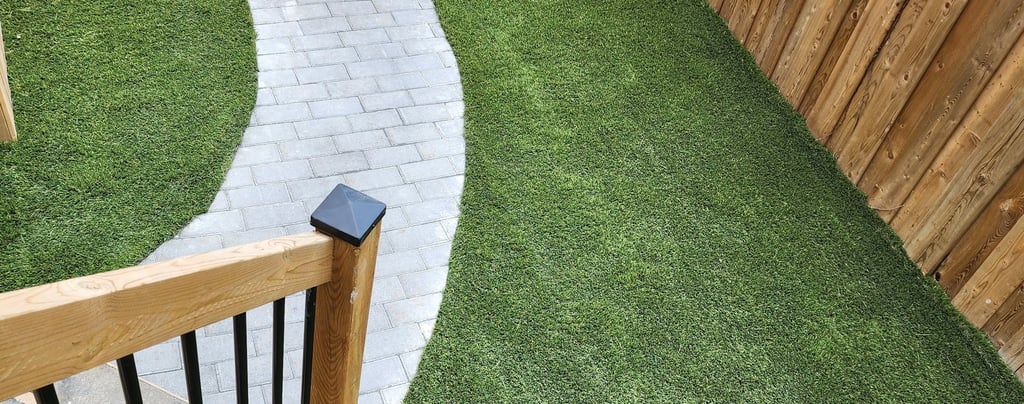Artificial Grass and Synthetic Turf Installation
benefits of artificial grass and steps involved in artificial turf installation
12/19/20241 min read
Artificial turf installation offers a low-maintenance, durable, and aesthetically pleasing alternative to natural grass. It eliminates the need for watering, mowing, and fertilizing, making it an eco-friendly choice that conserves resources and reduces long-term maintenance costs. Artificial turf is highly versatile, providing a lush, green appearance year-round, even in areas with heavy foot traffic or challenging climates. It is also resistant to pests, weeds, and weather-related damage, making it ideal for residential yards, playgrounds, sports fields, and commercial spaces.
Steps Involved in Artificial Turf Installation:
Site Preparation: Clear the area of existing grass, debris, and weeds, and ensure the ground is level.
Weed Barrier: Lay a weed barrier fabric below the base to prevent weed growth.
Base Installation: Spread and compact a layer of crushed stone or gravel to create a stable, well-draining base.
Screening Installation: Spread and compact a layer of screening or chips and dust.
Measuring and Cutting: Roll out the artificial turf and cut it to fit the dimensions of the area.
Joining Sections: Use seam tape and adhesive to join multiple pieces of turf seamlessly.
Securing the Turf: Anchor the edges with landscape nails or staples to keep the turf in place.
Adding Infill: Spread infill material, such as sand or rubber granules, to weigh down the turf and maintain its shape.
Brushing and Finishing: Use a power brush to evenly distribute the infill and lift the turf fibers for a natural look.
Inspection and Cleanup: Inspect the installation for any gaps or loose edges and clean up the site.


Contact Us
Service Area: Kitchener-Waterloo, Cambridge, Paris, Brantford, Hamilton and Surrounding Area
Opening Hours
Request A Quote
Monday to Friday 8 AM to 5 PM
Saturday 9 AM to 4 PM
Sunday Closed
© 2024 BluSirkle Landscaping. All rights reserved.
